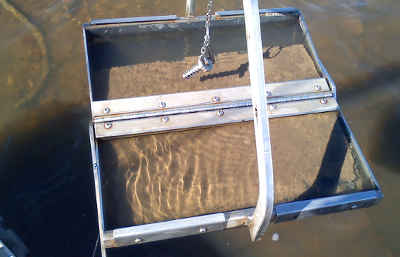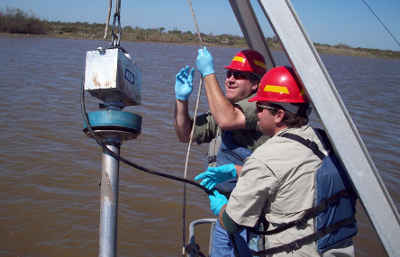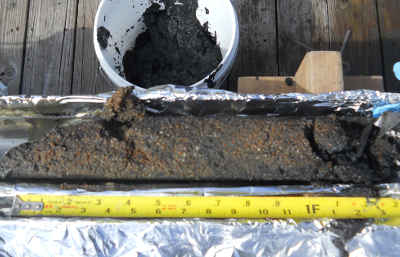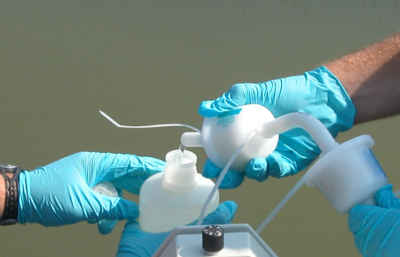Benchmark scientists have collected and processed sediment samples from rivers, ship channels, marshes, lakes, bays and the Gulf of Mexico. The study objectives and target depths of a sampling program determine the sample collection and processing methods. After identifying project specific methods, Benchmark can then develop a sediment sampling and analysis plan (SAP) tailored to the study.
Surface Grabs
Benchmark routinely collects surface sediment samples using a variety of sampling devices including: Ekman, Ponar, and Van Veen samplers. These devices are used when surface samples are desired and/or large volumes of sediment are needed (e.g., toxicity testing, sediment infauna assessment).

Sediment Coring
If deeper sediments are needed or a known depth stratum is desired, Benchmark scientists use sediment core samplers. Benchmark uses a lightweight piston corer for soft sediment less than 8 feet deep. The piston corer is quickly deployed and can be operated without heavy equipment. A vibracorer is used when sediments are firm or deeper than 8 feet. Sediment cores can be homogenized or sectioned by depth.

Sediment Profiling
When information about specific depths or specific sediment strata is needed, Benchmark scientists use a piston corer or a vibracorer. Sediment cores are measured and extruded, or the sampling tube is split to access sediment strata. A sediment profile is produced when sub-samples are collected from successive sediment strata, then analyzed for physical and/or chemical constituents.

Sediment Pore Water Analysis
Studies investigating dissolved or available chemicals in sediment often require pore water analysis. Pore water samples are usually extracted from sediment using centrifugation or positive pressure gas. Pore water can be extracted under anoxic conditions when target analytes might be lost through oxidation.

More Environmental Sampling Services




